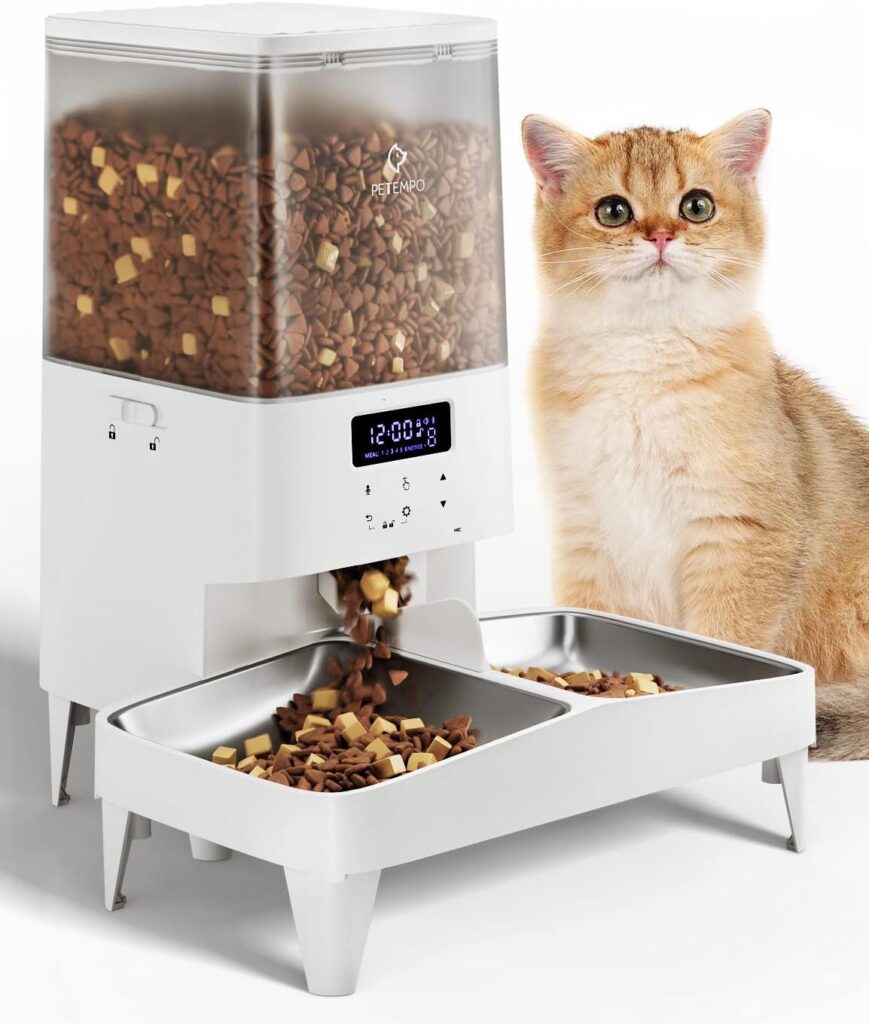As pet owners, we cherish our furry companions, but our busy schedules sometimes clash with the responsibilities of feeding them on time. This is where automatic cat feeders come to the rescue, offering convenience and peace of mind for both pets and their owners. In this article, we delve into the world of automatic cat feeders, exploring their benefits, features, and considerations to help you make an informed choice for your feline friend.
Understanding Automatic Cat Feeders
Automatic cat feeders are innovative devices designed to dispense predetermined portions of food at scheduled times, eliminating the need for manual feeding. These feeders typically consist of a food reservoir, a dispenser mechanism, and programmable settings that allow pet owners to customize feeding schedules according to their cats’ dietary needs.
Benefits of Automatic Cat Feeders
Consistency: Maintaining a consistent feeding schedule is essential for the health and well-being of cats. Automatic feeders ensure that your pet receives meals at the same times each day, helping regulate their metabolism and digestive system.
Convenience: For pet owners with hectic lifestyles or irregular work hours, automatic cat feeders offer unparalleled convenience. Whether you’re running late at the office or enjoying a weekend getaway, you can rest assured that your cat will be fed on time.
Portion Control: Obesity is a common issue among indoor cats, often resulting from overeating or free-feeding. Automatic feeders allow you to portion out precise amounts of food, preventing excessive consumption and promoting a healthier weight.
Reduced Anxiety: Cats are creatures of habit and may experience stress or anxiety when their routines are disrupted. By sticking to a consistent feeding schedule, automatic feeders help alleviate your cat’s anxiety and promote a sense of security.
Multi-Pet households: In households with multiple pets, automatic feeders can prevent food-related conflicts and ensure that each animal receives its fair share of meals. Some feeders even feature multiple compartments, allowing you to feed different pets simultaneously.
Features to Consider
Capacity: Consider the size of your cat and how much food they consume daily when choosing an automatic feeder. Opt for a model with a sufficiently large food reservoir to accommodate your cat’s needs without requiring frequent refills.
Programming Options: Look for feeders with customizable programming options, including the ability to set multiple meal times and portion sizes. Advanced models may offer smartphone connectivity, allowing you to adjust feeding schedules remotely.
Dispensing Mechanism: The type of dispensing mechanism can affect how easily your cat can access the food and how effectively the feeder prevents tampering or overeating. Gravity-fed feeders and programmable dispensers are popular options, each with its advantages.
Power Source: Automatic feeders typically rely on either batteries or electrical outlets for power. Consider your preferences and the availability of power sources in the intended location before making your selection.
Ease of Cleaning: Regular cleaning is essential to prevent bacterial growth and maintain your cat’s health. Choose a feeder with removable components that are dishwasher-safe or easy to hand wash for hassle-free maintenance.
Durability and Safety: Invest in a high-quality feeder made from durable materials that can withstand daily use and resist tampering from curious cats. Additionally, ensure that the feeder is free from any sharp edges or potential choking hazards.
Considerations and Tips for Use
Gradual Transition: If your cat is accustomed to free-feeding or a different feeding schedule, introduce the automatic feeder gradually to avoid causing stress or confusion. Start by incorporating one meal at a time until your cat adjusts to the new routine.
Monitor Food Intake: Keep an eye on your cat’s food intake and weight to ensure that they are receiving adequate nutrition without overeating. Adjust portion sizes as needed based on your cat’s activity level, age, and dietary requirements.
Regular Maintenance: Schedule regular cleanings and inspections of the feeder to prevent food residue buildup and mechanical issues. Follow the manufacturer’s guidelines for maintenance and troubleshooting to prolong the lifespan of your feeder.
Backup Plan: While automatic feeders offer convenience, it’s wise to have a backup plan in case of power outages or malfunctions. Keep a supply of manual feeding supplies on hand and inform a trusted friend or neighbor of your cat’s feeding schedule in case of emergencies.
Conclusion
Automatic cat feeders are valuable tools that simplify pet care and enhance the well-being of our feline companions. By providing consistent meals, promoting portion control, and reducing anxiety, these devices offer numerous benefits for both pets and their owners. When choosing an automatic feeder, consider factors such as capacity, programming options, and ease of cleaning to find the perfect match for your cat’s needs. With proper use and maintenance, an automatic feeder can revolutionize your pet care routine, allowing you to enjoy peace of mind and quality time with your beloved cat.







